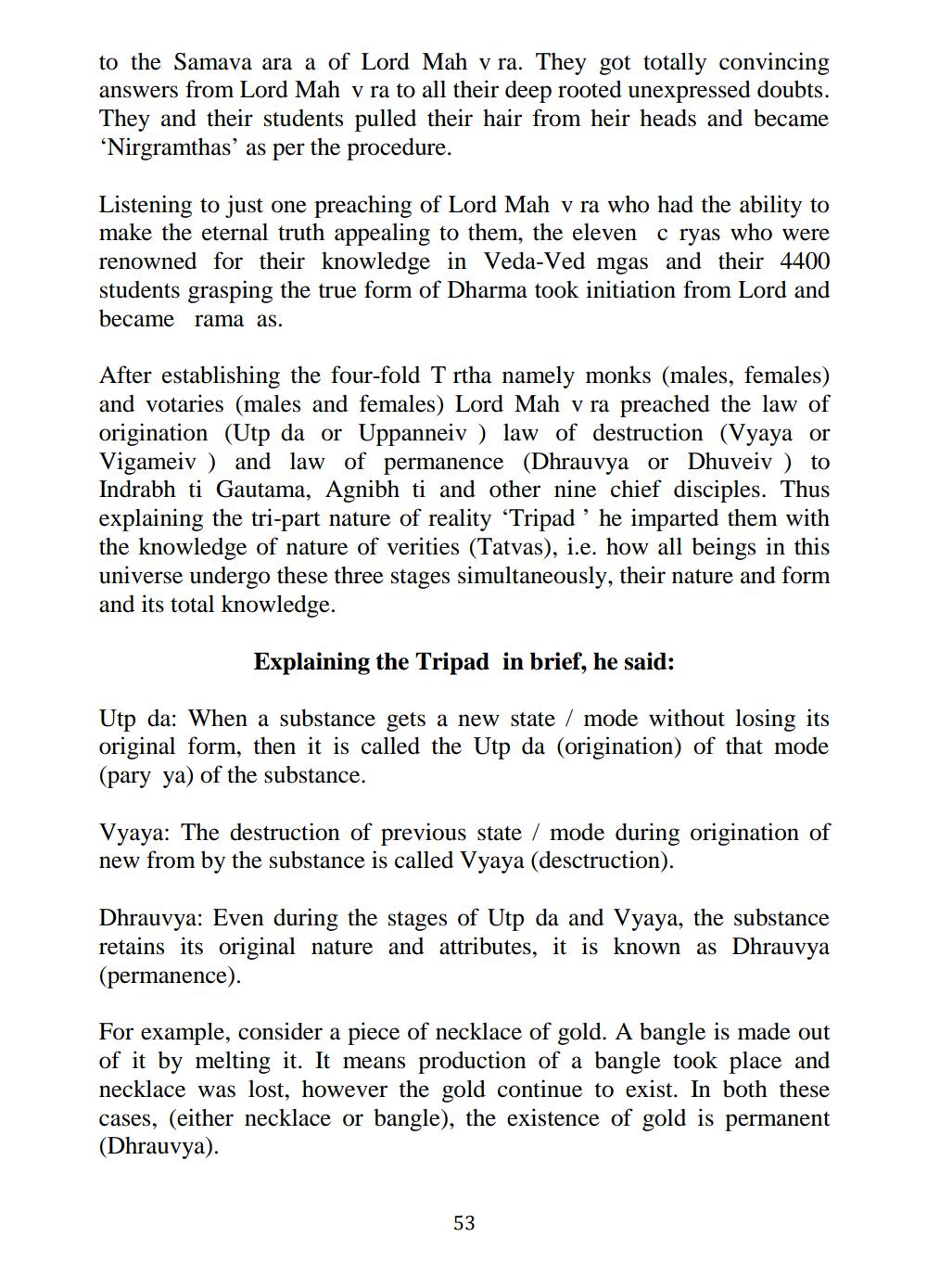________________
to the Samava ara a of Lord Mah v ra. They got totally convincing answers from Lord Mah v ra to all their deep rooted unexpressed doubts. They and their students pulled their hair from heir heads and became 'Nirgramthas' as per the procedure.
Listening to just one preaching of Lord Mah v ra who had the ability to make the eternal truth appealing to them, the eleven c ryas who were renowned for their knowledge in Veda-Ved mgas and their 4400 students grasping the true form of Dharma took initiation from Lord and became rama as.
After establishing the four-fold T rtha namely monks (males, females) and votaries (males and females) Lord Mah v ra preached the law of origination (Utp da or Uppanneiv ) law of destruction (Vyaya or Vigameiv ) and law of permanence (Dhrauvya or Dhuveiv ) to Indrabh ti Gautama, Agnibh ti and other nine chief disciples. Thus explaining the tri-part nature of reality "Tripad’he imparted them with the knowledge of nature of verities (Tatvas), i.e. how all beings in this universe undergo these three stages simultaneously, their nature and form and its total knowledge.
Explaining the Tripad in brief, he said:
Utp da: When a substance gets a new state / mode without losing its original form, then it is called the Utp da (origination) of that mode (pary ya) of the substance.
Vyaya: The destruction of previous state / mode during origination of new from by the substance is called Vyaya (desctruction).
Dhrauvya: Even during the stages of Utp da and Vyaya, the substance retains its original nature and attributes, it is known as Dhrauvya (permanence).
For example, consider a piece of necklace of gold. A bangle is made out of it by melting it. It means production of a bangle took place and necklace was lost, however the gold continue to exist. In both these cases, (either necklace or bangle), the existence of gold is permanent (Dhrauvya).
53




